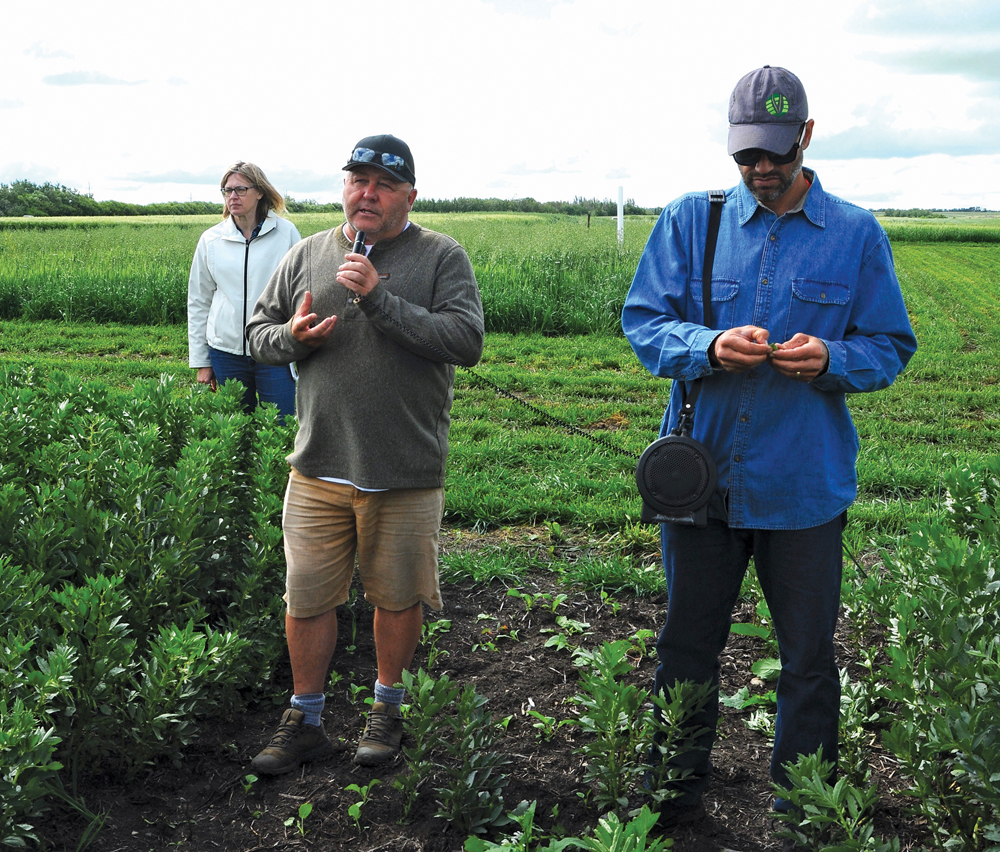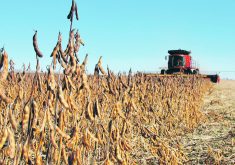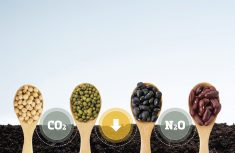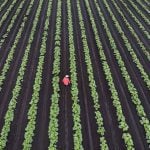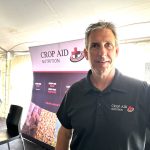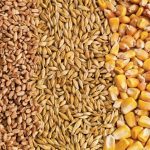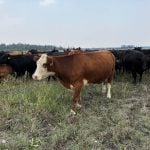Faba beans are an excellent source of protein, but they’re not for everyone.
About four per cent of the human population can’t make the most of them because of two compounds they contain, vicine and convicine. These anti-nutrients prevent those people from efficiently absorbing the beans and may cause mild illness.
One Canadian seed company better known for its hemp genetics is tackling this challenge. Verve Seed Solutions highlighted its work at a recent field day at the Parkland Crop Diversification Centre in Roblin.
Read Also
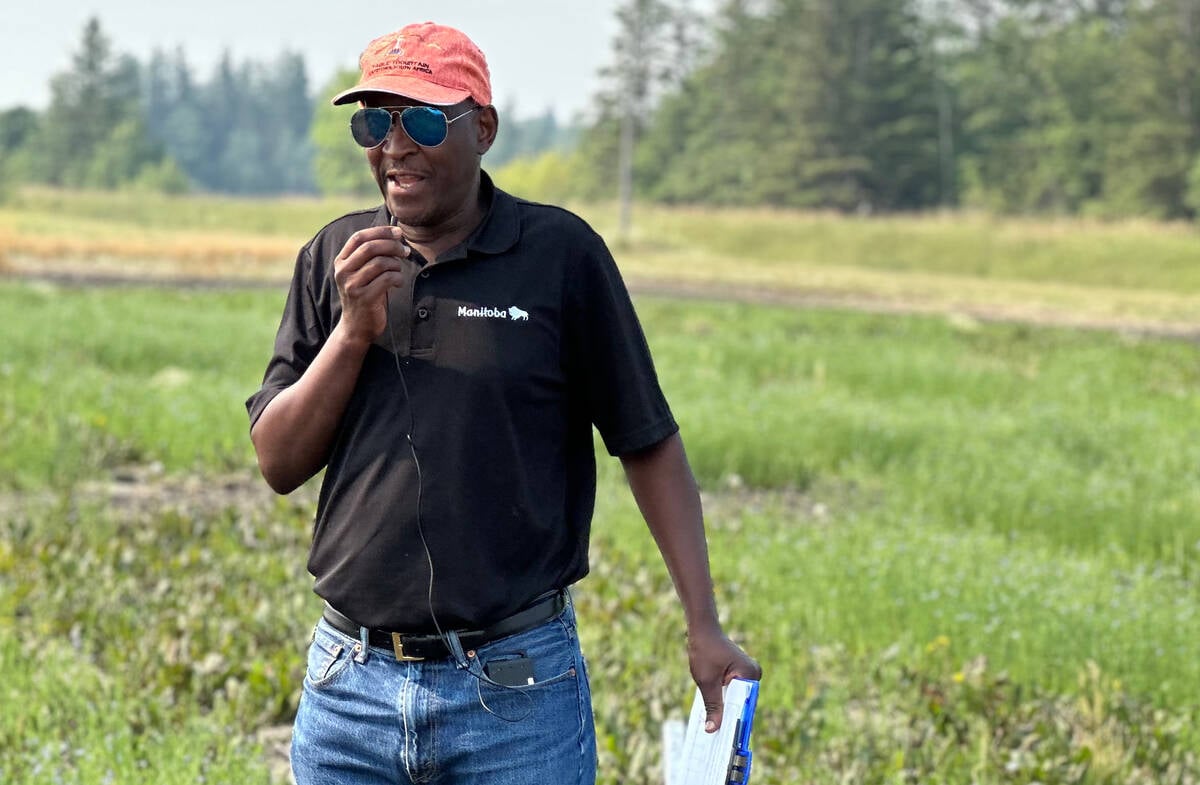
How much nitrogen can farmers really cut?
Manitoba fertilizer trials look for nitrification inhibitor sweet spot, to lower greenhouse gas emissions and cost without hurting yield.
Jeff Kostuik, Verve’s general manager, said the 1142-16 variety has garnered attention in trials over the past few years.
“What the market is looking for is a low vicine, low convicine, zero tannin variety more suitable for human consumption in a plant-based protein,” he said. “Faba beans are very high in protein and this variety in particular.”
The variety is a white-flowered low vicine/convicine (LVC) strain that Saskatchewan Pulse Growers has grown in test plots for three years. Data shows a yield 103 percent greater when compared to Snowbird, although time to maturity was two days longer.
Although 1142 is an earlier maturing variety, it can actually come in late. It has indeterminate growth so it doesn’t stop producing at a fixed point.
“As long as you’re getting rains in the fall and good weather, it will keep flowering,” Kostuik said. “If you don’t have a killing frost by Sept. 15, you may start desiccating or swathing.”
Another feature is seed size, which is 358 grams per 1,000 kernels, a full 76 per cent smaller than Snowbird. The smaller seed makes a difference at seeding and harvest time.
“The breeding objective has been a lot smaller seed,” Kostuik said. “If you remember back about 15-20 years ago, the seed was the size of your thumb and if you’re seeding with an air seeder or any drill mechanism, it could be very difficult to get that product down through the hose without plugging it.”
Protein levels come in at 27 per cent. This in combination with the LVC ratings and zero tannin give it good market potential for both human and animal consumption. Cattle are not as sensitive as hogs so they can tolerate the tannin varieties.
“With hogs, you could only put about 10 or 15 per cent of faba bean in the ration because hogs did not like that tannin,”” Kostuik said. “Having non-tannin, you can put whatever you want in the ration and have that high protein value.”
With other monogastrics — such as humans — the LVC varieties offer tremendous market potential in today’s world.
“We’re working with a company called Ingredion out of Vanscoy, Saskatchewan, and what they’re looking at is plant-based protein,” Kostuik said. “The tannin itself has a flavour component that some people liked but, for a plant-based protein, they want a neutral flavour that they can add to your Impossible Burger or whatever else they can put it.”
To get that neutral flavour, breeders developed tannin-free strains and managed to remove the vicine and covicine as well. Although most people can digest faba bean products, a select number are sensitive to these compounds and the problems can be serious. Some are unable to produce a certain enzyme so eating products based on faba beans can cause favism. This leads to a breakdown in red blood cells and is worse in infants and children.
“The vicine/convicine is almost like a lactose intolerance that some people have,” Kostuik said. “Some people, some certain per cent of the population will get sick, not violently sick, but they will get ill from eating faba beans.”
Farmers will also like the crop’s nitrogen fixing capability. As a card-carrying member of family fabaceae, the faba bean has root nodules containing nitrogen fixing bacteria and they’re pretty good at it.
“I would be amiss to not mention that faba bean is the strongest nitrogen fixing annual plant that we have,” Kostuik said. “Everybody knows you have to use the proper rhizobia to inoculate with and with the fertilizer prices where they’re at, it’s a very, very good crop for the rotation.”
A legume crop that can feed itself has extra agronomic value beyond its own season. On top of that, with regulators eyeing nitrous oxide emissions from fertilizer, faba beans may present a workable way to feed residual nitrogen for the following year.
“Last year I had about a 40- to 50-pound reserve of nitrogen in the soil produced by the faba bean plant,” Kostuik said. “I had hemp grown on faba bean stubble, I had hemp grown on canola stubble and wheat stubble. Faba beans, by far, had the most lush growth.”
Kostuik also said this stand did well in this year’s rain. Like other strains of faba bean, 1142-16 is a cool season crop that likes moisture.
Additionally, it doesn’t seem badly affected by aphanomyces.

